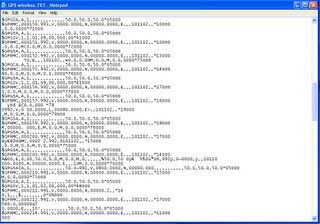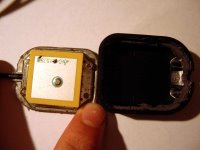Wireless working ... well almost

With some breathing space of a week between exams I decided to try and get the wireless link working for our project. Pondering on this I'm not sure why - the spec says comms interfaces are Wades job, but with his reluctance to use serial communication having these archaic Apples :) without serial ports I guess the lot fell to me.
After a meeting with our supervisor, our hopes of getting this little module to do 100m were somewhat attenuated after past years students best efforts were in the order of 1m. After a day of toil and experimentation I have finally got some results. At 1m I had GPS data transmitting at 4800bps. Unfortunately the data is quite noisy with lots of junk in there. I think Wade will have to implement error correcting codes like hamming codes to get this to work reliably. The other consideration is that we were not doing this properly using Manchester encoding and so would have skew problems. With Manchester encoding I'm expecting to get around 50m - hopefully.
One weird side affect of all this was that when the receiver (not the transmitter!!) was powered up horizontal lines were seen on the TV downstairs. Possibly they run on the same power circuit, but I still think this is really weird - It shouldn't be transmitting (and therefore interfering) anything. Oh well - time for Wade to implement Manchester encoding :)



